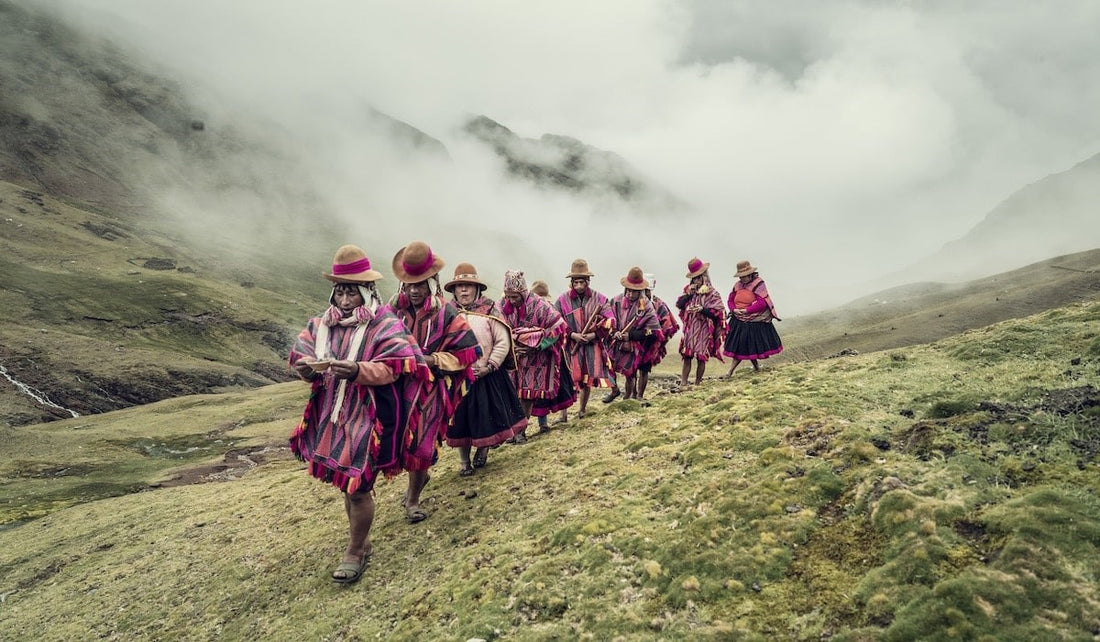
Collecting Andean Textiles

Image of the Q'ero by Jimmy Nelson from Selvedge Issue 98: Together.
In this guest post Annie Hurlbut Zander, CEO of Peruvian Connection, tells us about her memories of carrying out doctoral research in the Andes in the seventies. Annie was one of the first class of women to graduate from Yale in Archeology, before continuing her studies in Anthropology at the University of Illinois. Her research in the Andes was a turning point in her life, when an entrepreneurial passion for textiles overtook an academic career.
I spent 1975 in Cuzco, Peru, doing anthropological research with women selling in Andean marketplaces. As part of a rag tag group of ex-patriots living in Cuzco at the time, a group which included anthropologists, adventure travelers, mysticists and hippies, I became exposed to Andean warp-faced weaving, the ancient and sophisticated textile tradition of Peru. One of the most fascinating things about these textiles was that each community sported its own distinctive patterns, colors and motifs. I soon began collecting the textiles and quickly grew obsessed with women’s shawls from Chinchero, Checacupe, Lares, Pitumarca and Chahuatire.

Among my favorites were the mantas and men’s festival scarves from the remote village of Q’ero at 14,000’ in the Andes. I was struck with the distinctive design motifs of Q’ero weavings—chunchus , or feather-headdressed warriors depicting inhabitants of the tropical forest, and intis, depicting the all-important sun god. A fine herringbone striping, called lloque resulted from alternating z-twist and s-twist warp yarns. The use of lloque was purported to ward off evil spirits. It also made the textile rain-resistant, a distinct advantage in the altiplano rainy season. The yarn colors of Q’ero textiles also set them apart from those of other Andean villages. A prominent, almost-too-brilliant pink and reds used in Q’ero textiles are from a natural source, the dried blood of the cochineal bug from the lower altitude tuna cactus.

What truly captured my attention about Q’ero and other Andean textiles was the fineness of the spin and the complex weaves of the pattern striping.The extremely fine yarns used resulted from an extraordinarily tight spin of the alpaca fiber. The drape of the finest ceremonial textiles is supple and almost silk-like. Even more incredible, since the textiles are warp-faced, the end design and the complex weave structures, including 3-color complementary warp weave, must be visualized and worked out prior to the warping of the loom. This makes warp-faced patterning much more difficult to achieve than weft-faced tapestry design which can be worked out and adjusted as the weaving proceeds.

Find out more about Andean textiles at Centro de Textiles Tradicionales del Cusco (CTTC), a non-profit organization that was established in 1996 by Andean weavers and their supporters.
Selvedge is holding a virtual event on collecting textiles, Wednesday 13 January 2021, Collecting with Sophie Roet, Esther Fitzgerald and Bess Nielsen